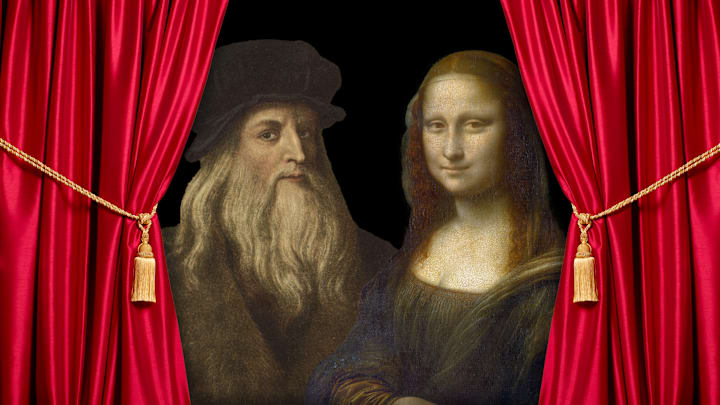Nauru, a raised coral atoll in southeastern Micronesia, measures roughly 8 square miles and is home to some 13,000 people. In the mid-20th century, the island nation briefly boasted the world’s highest GDP per capita thanks mostly to guano (seafowl excrement), which had accumulated over millennia into phosphate-rich mineral deposits that were strip-mined mainly for fertilizer production. But as the century progressed, Nauru’s leaders realized the precariousness of an economy entirely dependent on a rapidly depleting resource that would take thousands of years to replenish. So they looked for ways to diversify.

One way came to them from Duke Minks, a Liverpudlian financial advisor to Nauru and the former road manager of British pop rockers Unit 4 + 2. The group, whose greatest success was the 1965 chart-topper “Concrete and Clay,” had been disbanded for years when front man Tommy Moeller and Minks started developing a musical with help from Moeller’s brother, Greg. The plot imagined a love story between Leonardo da Vinci and Lisa Gherardini, the woman widely believed to have been the model for the Mona Lisa.
Not only did Minks get involved in developing the show itself, but he also pitched the idea to Nauru’s officials as a potentially lucrative investment. They bought in for a reported 1.5 or 2 million pounds and left Minks and the Moellers to make their money back and more.
Or so they hoped.
From Charmingly Simple to Sickly Sweet
Leonardo: The Musical: A Portrait of Love debuted in 1992 at the Old Fire Station, an arts center in Oxford, England. The initial audience was an exclusive mix that included, according to The Independent, Andrew Lloyd Webber, theater producer Robert Mackintosh, 10 people from the department store chain Debenhams, Nauruan president Bernard Dowiyogo, and a number of other Nauruan officials.
“The production of it at the Fire Station in Oxford was very simple, beautiful lighting, beautiful arrangements, punchy music,” Hal Fowler, who played Leonardo’s close friend and acolyte Francesco Melzi, recalled on the BBC program The Political Butterfly Effect. “There were some suspect numbers in it, I have to admit … but yet there was something quite sweet about it.”
Leonardo ran in Oxford from October 1 to October 17 and garnered enough acclaim to earn a transfer to the Strand Theatre (now the Novello Theatre) in London’s West End. John Kane, a former Royal Shakespeare Company member with a robust career in writing BBC TV series, was enlisted to punch up the script; and Rob Bettinson, best known for directing the Buddy Holly jukebox musical Buddy, was tapped to direct. But creative differences plagued the production throughout its London previews, and the musical opened in early June 1993 to fairly horrid reviews.
Critics found the show to be both mawkish and dull, with a fusion of ’90s dialogue and Renaissance design that didn’t serve either era. “It is as if we are on the verge of an old Monty Python sketch,” Nicholas de Jongh wrote for the Evening Standard. The Daily Telegraph’s Charles Spencer dismissed its “great deal of risible tosh” that featured no small number of “sickly sweet ballads.” That said, Spencer did admit that sometimes the show managed “a level of plodding competence” and anyone “feeling particularly sentimental” might be moved to tears by the second act.
Creative License Only Goes So Far
But the most glaring issue seemed to be the story itself, which was historically inaccurate to the point of ridiculousness. According to scholars, Francesco del Giocondo commissioned Leonardo da Vinci to paint a portrait of his wife, Lisa Gherardini. That more or less happens in the musical, too—but then, while painting the Mona Lisa, Leonardo and Lisa fall madly in love and begin an affair that produces a child. Lisa pretends the child is Francesco del Giocondo’s, but he discovers the betrayal and accidentally murders Leonardo in a fit of rage.
All the heterosexual melodrama is at odds with what scholars have long argued about Leonardo da Vinci: that he was likely gay. Though the musical alludes to this through the character of Francesco Melzi (who may have been Leonardo’s lover as well as student), the focus of his romantic life—or even just his life—is very much a woman. As Spencer said, “the show presents Leonardo as a greater lady’s man than artist or scientist.” The Independent’s David Lister put it less delicately: “Art historians in the audience may have felt queasy midway through Act One when Leonardo da Vinci slapped the Mona Lisa on the bum, and asked her to ‘help me with my research.’ ”
President Dowiyogo, for his part, expressed enthusiasm at a gala after the opening performance. “I am really excited,” he told the press, going on to acknowledge that the central plot might be more fiction than fact. “But a bit of love, a bit of music, it takes the worries away.”
Unfortunately, audiences didn’t share the sentiment. People wasted no time in calling the bird poop–financed production a “stinker,” and the critical rejection proved too much for poor Leonardo to endure: The musical shuttered about a month after its premiere. It wouldn’t be fair to blame one theatrical venture for Nauru’s continued economic troubles—it was far from their only investment—but it definitely didn’t help in the way Dowiyogo and company had hoped.
As Minks told the Evening Standard shortly after the musical closed, “Leonardo died in Italy {in} 1519 and again in the Strand in 1993.”
Learn More About Musicals:
